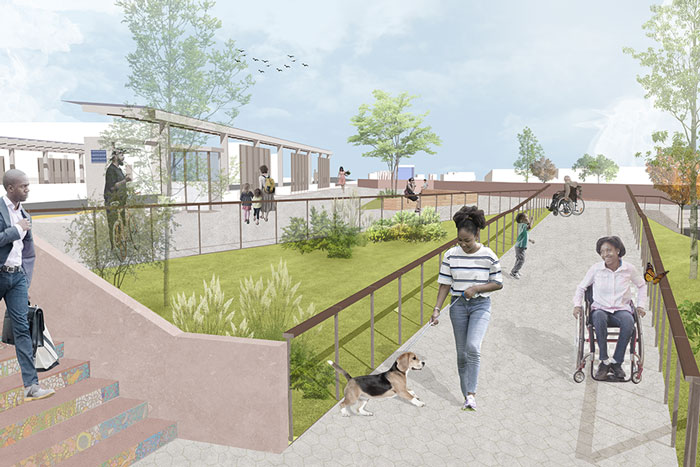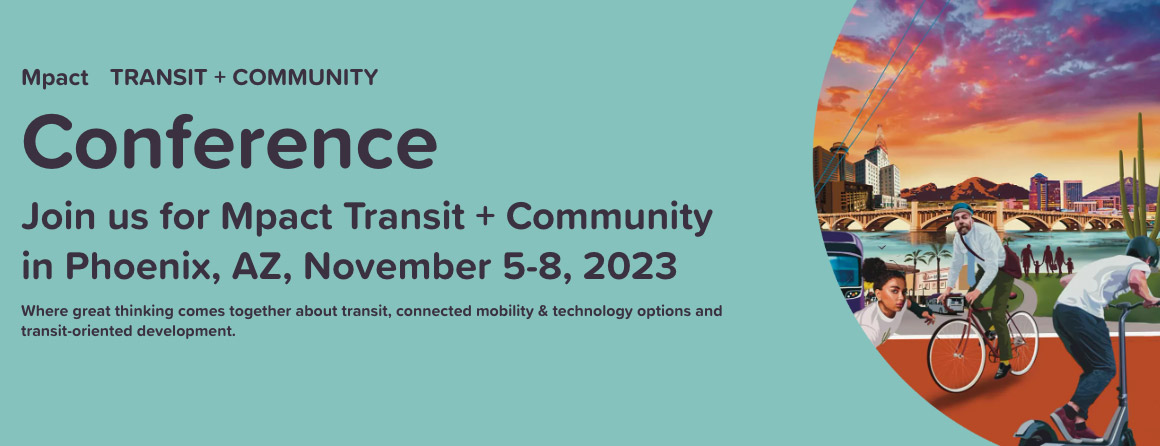Wayfinding and Transit Design: True Accessibility and Universal Design
The starting point for the session – True Accessibility and Universal Design at this year’s Mpact conference – was an animated conversation with my co-presenter Ron Brooks, the founder and CEO of Accessible Avenue and a visually impaired lifelong pedestrian and transit user. Ron and I spoke about the integration of the built environment and technology as an important factor in creating a good wayfinding system for those with disabilities, especially within transit systems which could serve as a lifeline for a lot of people.

Perspective View of proposed Stairs and ADA Ramp integration at the Station – By evolveEA for Pittsburgh Regional Transit
The session will highlight key accessibility questions from early in the design process till the station is built, using transit projects from Pittsburgh that I am currently involved in, including Wilkinsburg Station along the MLK. Jr. East Busway corridor and Station Square Station on the T-light rail system. These projects are at different stages of the design process and show the importance of standing by accessibility goals set early in the project and returning to them regularly. These goals can help the designer resist the push and pull of value engineering during design development, construction documentation, and specifications.
As we design transit stations, it is important to remember that for many people with disabilities, several barriers remain in navigating to and within the pedestrian environment – locating the transit stop, finding the escalator, using the kiosk or boarding the right train. Knowing how to start moving or when you’ve arrived can be the difference between comfortably navigating a complex transit area or staying home or getting stuck on more costly and less desirable paratransit.
(excerpt from the Mpact True Accessibility and Universal Design session description prepared by Chris Sandvig, Ron Brooks, and Sarine Sahakian)
Ron and I will define wayfinding and the difficulties faced by people with disabilities with wayfinding and the built environment. We will take attendees through the station design process and integrate it with the accessibility goals that create a well-designed pedestrian experience. We will finish by sharing a series of new wayfinding technologies and explore the advantages and financial implications of these technologies along with strategies for addressing challenges such as a digital divide that could dictate who has access.


